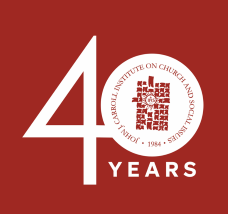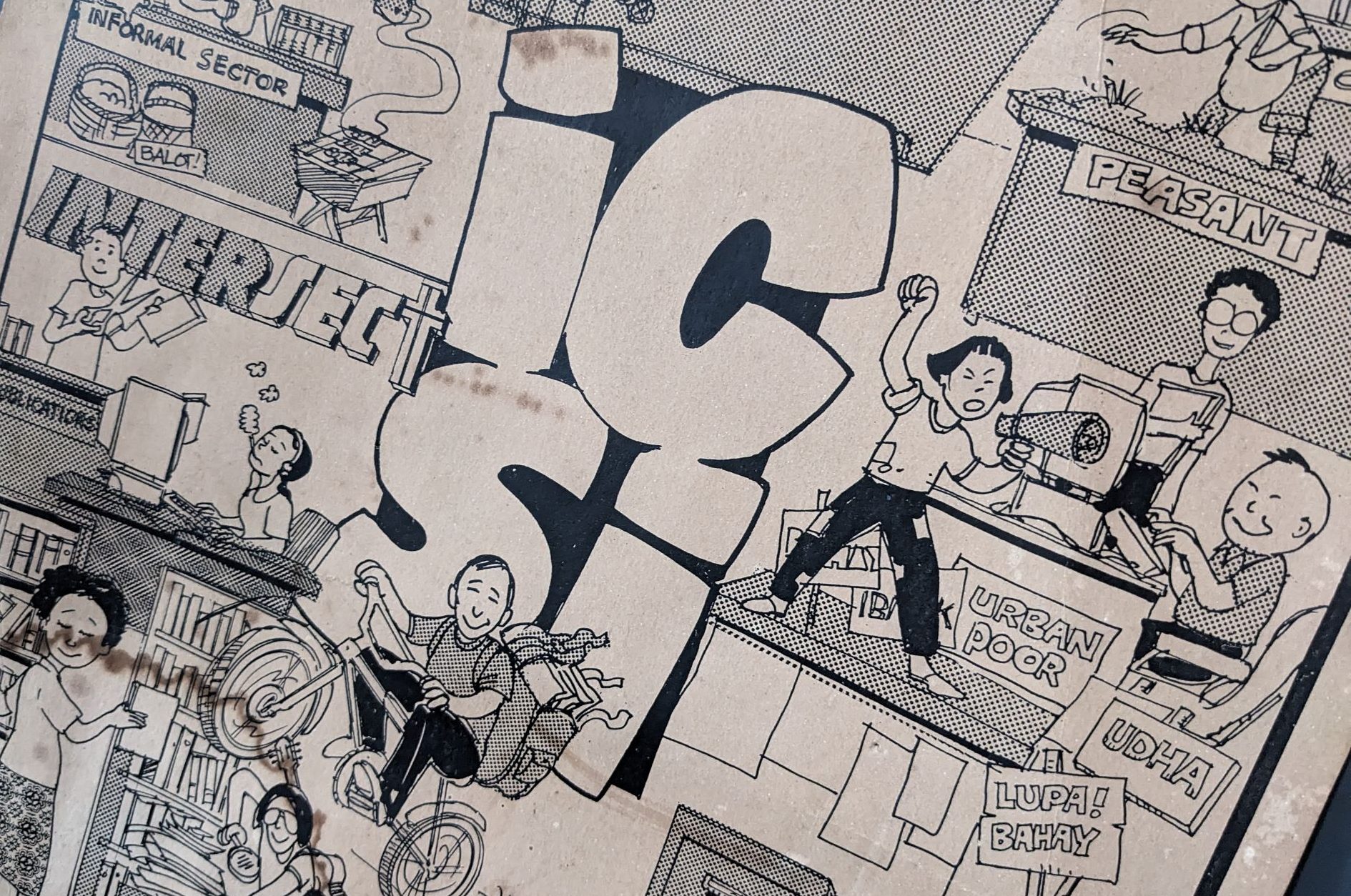By Francisco F. Claver, S.J., D.D.†
19 August 2009
 One might wonder what the word “Church” in the title of the Institute means. In the minds of its initiators, it meant Church, the Holy People of God, as has been and continues to be more commonly emphasized since Vatican II; and not just the “ official Church”, i.e., the hierarchy, the bishops and priests, as journalists often understand the term when they say “the Church says this” or “the Church does that”, etc.
One might wonder what the word “Church” in the title of the Institute means. In the minds of its initiators, it meant Church, the Holy People of God, as has been and continues to be more commonly emphasized since Vatican II; and not just the “ official Church”, i.e., the hierarchy, the bishops and priests, as journalists often understand the term when they say “the Church says this” or “the Church does that”, etc.
But for this looking back over the Institute’s first 25 years of existence, I would like to look at how ICSI has comported itself, precisely with the Philippine hierarchy, in its beginning years.
The first piece of research. Even before the Institute was set up and officially opened on 31 July 1984, its first piece of research had been completed and reported on. It was on the priorities and directions of the Philippine Church. Father Carroll dwelt on this research in his talk, the very first of the series. But I thought I’d add a bit more to what he said because of what followed in the Catholic Bishops Conference of the Philippines (CBCP), afterwards. The story behind that research and how it came about is easily told.
In early 1983, Archbishop Mabutas (he had just been elected CBCP President) proposed that a National Pastoral Assembly be held with a view to coming up with a National Pastoral Plan for the entire Philippine Church. Before the idea could even be voted on, however, the objection was raised that it would not be easy coming up with such a plan since the bishops and the dioceses were not operating from a uniform concept of the Church. (The problem of the bishops’ differing ecclesiologies had been a sore point from the very start of martial law in 1972, and was, in the minds of many of us, one of the main reasons why we couldn’t act as one insofar as martial law problems were concerned.) Archbishop Mabutas agreed, and he suggested that we find out what those variant theologies were. That was how Father Carroll and I were commissioned to do the research—although “commissioning” is not the right word as not a single centavo was appropriated for it!
To make the long story short, we did the research. From the priorities that the diocese had set for themselves, we were able to classify them, in summary form–whether they, the dioceses, were still stuck on pre-Vatican II notions of the Church and pastoral work, or had launched out along the lines of renewal that the Council called for.
Of the three regions, Mindanao was way ahead of the Visayas and Luzon as far as Vatican II renewal ideas were concerned; and of the latter two, Luzon had been following a more conservative line. But we didn’t only ask what priorities were being followed in 1983. A second question was asked about what the dioceses thought might be their priorities five years later. Answers to this second question pointed to a clear direction: it was towards a Church that was more strongly in line with Vatican II ideas and concerns.
The Second Plenary Council of the Philippines (PCP II). That direction was confirmed in the Second Plenary Council seven years later, in 1991. The decisions of the Council, especially the high pastoral priority it made of the Basic Ecclesiastical Communities (BECs), made crystal clear the Philippine Church’s strong resolve to go completely in the direction of Vatican II ideals. In 1995, the National Pastoral Plan was drawn up from the PCP II’s decision and proposed to all the dioceses for action. And that’s were we now are as a Church.
If I make much of the Institute’s part in the crucial event that the PCP II was, it is because the Plenary Council has been the best thing that has yet happened to the Church in the Philippines. It has been, in a very real sense, the Philippine Church’s “reception” of Vatican II, i.e., our official and wholehearted acceptance of and commitment to all that the Ecumenical Council has decreed for the renewal of our life as a Church. And ICSI did its little part in helping the Plenary Council do what it did.
In the lead-up to the convening of the Plenary Council, seven preparatory papers were written for discussion in the dioceses. Two of these came from ICSI: one was on “Church and Society”, the second on “Social Concerns”. Both papers were, to my mind, pivotal in the forming of the Council’s thinking, and this, not only in the fact of the acceptance of their main ideas and thrusts, but in the actual incorporation of some of their very wording of those same ideas and thrusts in the Council’s final document. Also, the Situationer that was prepared by the Institute was deemed comprehensive enough to be included in the appendix, as the Council’s own reading of the state of the nation.
Issues Prevailing in the Church at the Time of ICSI’s Founding
If our first research was about how the bishops defined the Church and worked their pastoral programs out of their definitions, there were other more pressing concerns for the wider Church arising from the continuing military rule of President Marcos that ICSI became involved with since its inception. From 1976 onward, there had raged among socially-minded Church people what was later called “the faith-ideology debate”. In essence, it came down to asking the question: for the sake of the reform of society, does one need a full-blown political ideology or is it enough to go by the general dictates of our Christian faith? The question was being asked in the context of the blatant instrumentalization of the Church by both government and Communist forces, in their schemes of reforming Philippine society according to their special ideological blueprints.
The problem in the end came down to these two: (1) how one analyzed society to see what changes had to be made (without falling into the Marxist line); and (2) whether resorting to violence was the only way to bring about change (not resorting to violence meant going against the grain of violence promoted by both martial law and the NDF zealots).
The analysis-problem tack came from the wide use of (Canon Houtart’s) “structural analysis” and its indubitably Marxist character. The problem with violence came not only from the Left’s program of liquidating perceived “enemies of the people”, but just as strongly resulted (? Emanated? Was just as strongly a result of government’s…) from the government’s all-out salvaging of Leftists and their suspected sympathizers. Both questions, hence, were actually one in that they sought to reply to whether indeed, violence or the armed struggle option presented by the Left, was the only viable alternative to martial law excesses.
The Institute met these problems head-on in several symposia that were held once its offices were operative. Two were especially directly relevant: the symposium on social analysis held on 14 September 1984 and the one on violence/non violence held on 9 March 1985. Coming as they did before 1986, they helped bring about the line of thinking which went against the Communists’ armed-struggle option as well as the militaristic rule of Marcos; and favored the ANV (active non-violence) way of social reform that ultimately ended in the EDSA people-powered rebellion.
The thought might seem preposterous, but I believe a strong case can be made for EDSA I’s being one of the strongest factors leading to the beginning of the demise of international Communism in 1989. For as soon as it happened, it became the worldwide exemplar of popular revolts against oppressive governments of any color.
Peaceful social change (ANV) when pitted against the violence of military-dominated governments; people power when launched against any form of dictatorship, whether of the right or the left: that was EDSA—and the Institute, right from the very start, did its little part in bringing this about.

